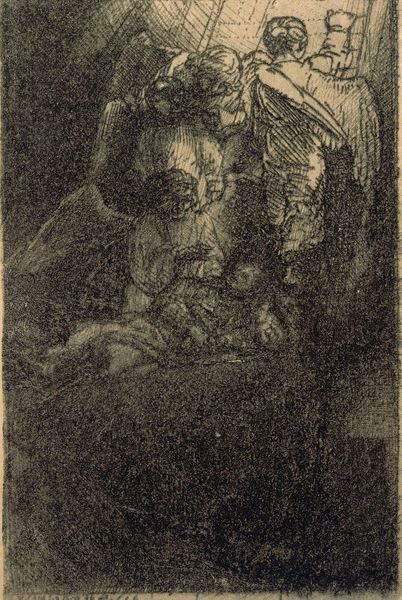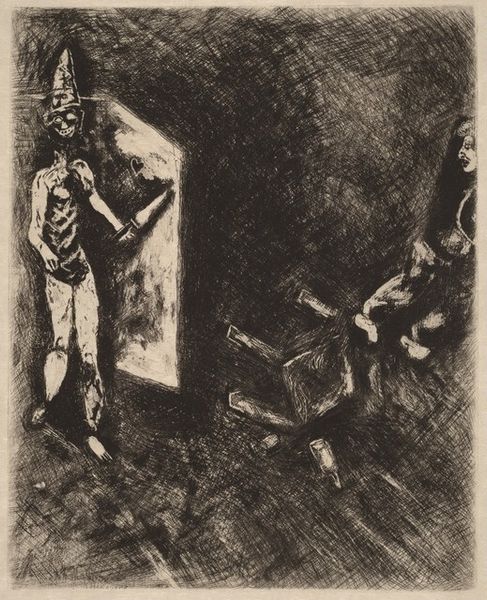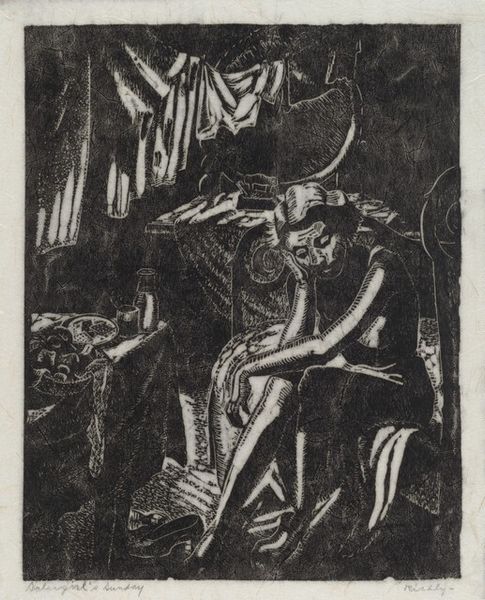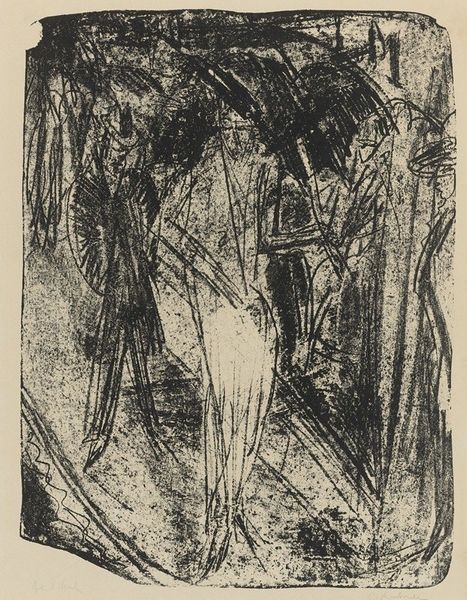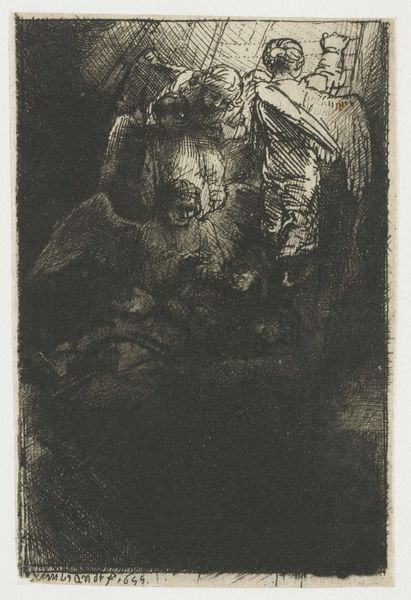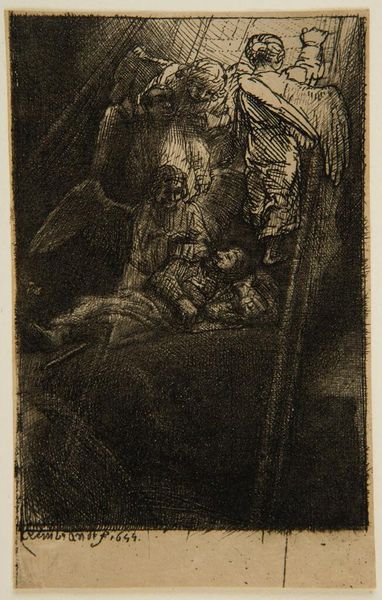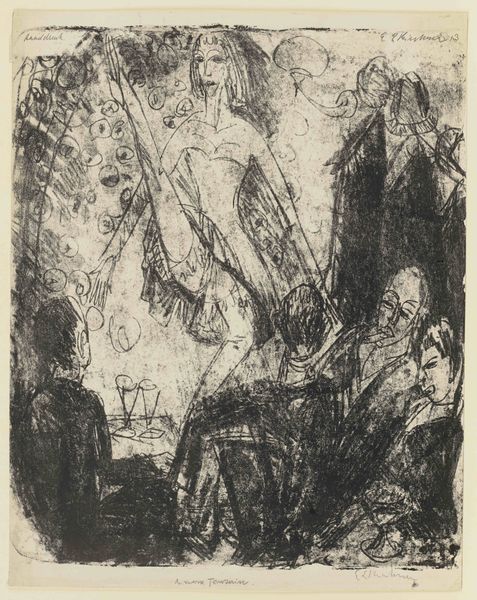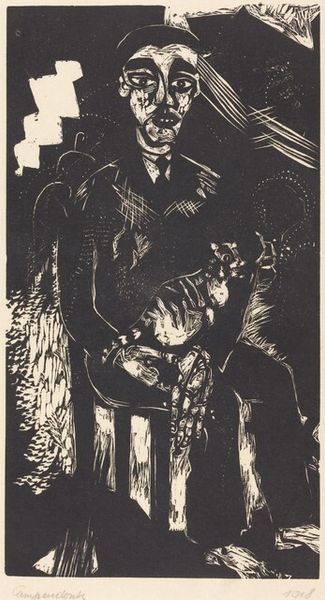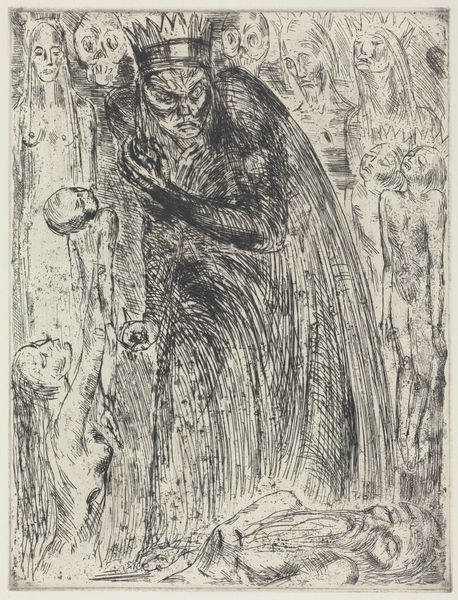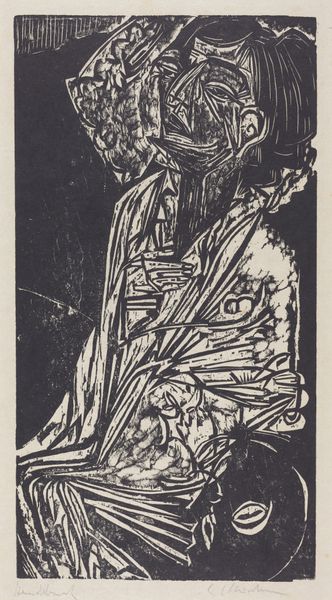
drawing, charcoal
#
portrait
#
pencil drawn
#
drawing
#
pencil sketch
#
charcoal drawing
#
pencil drawing
#
pen-ink sketch
#
expressionism
#
portrait drawing
#
charcoal
#
history-painting
Copyright: Public domain
Editor: We are looking at "La Guerre," or "The War," a charcoal and pencil drawing created in 1918 by Théophile Alexandre Steinlen. It’s a stark image; the deep blacks really give it a sense of foreboding. What’s your initial reaction? Curator: Oh, this drawing hits you right in the gut, doesn't it? Like a punch from history itself! It reminds me of that primal scream art can unleash, especially in times of turmoil. See how Steinlen uses the light behind them? Almost holy, like they’re trudging into a kind of twisted martyrdom. You know, during wartime, artists become these incredible conduits. What do you think Steinlen, a pacifist by nature, was trying to say with this bleakness? Editor: I suppose it speaks to the sheer brutality of war. The faces seem devoid of hope, really resigned. It feels like there is commentary on the cost of conflict? Curator: Absolutely, the vacant stares – have you ever felt like that, like the world's weight is crushing your soul? But look closer, isn’t there a glint of something else in those eyes? Maybe defiance, maybe the faintest ember of humanity refusing to be extinguished? Perhaps that’s Steinlen wrestling with his own demons, seeking a flicker of light amidst the encroaching darkness? War, you know, does that to you. Editor: I hadn't considered that internal struggle. Curator: Art’s often a mirror, reflecting the artist’s soul. It gives us a vocabulary to articulate feelings and issues, what now? Editor: I see that the artist's intentions, along with the subjects and context, all influence how a work of art resonates so profoundly. Thanks. Curator: Exactly! I have seen things differently. It also demonstrates how a shared conversation can influence our viewing.
Comments
No comments
Be the first to comment and join the conversation on the ultimate creative platform.
